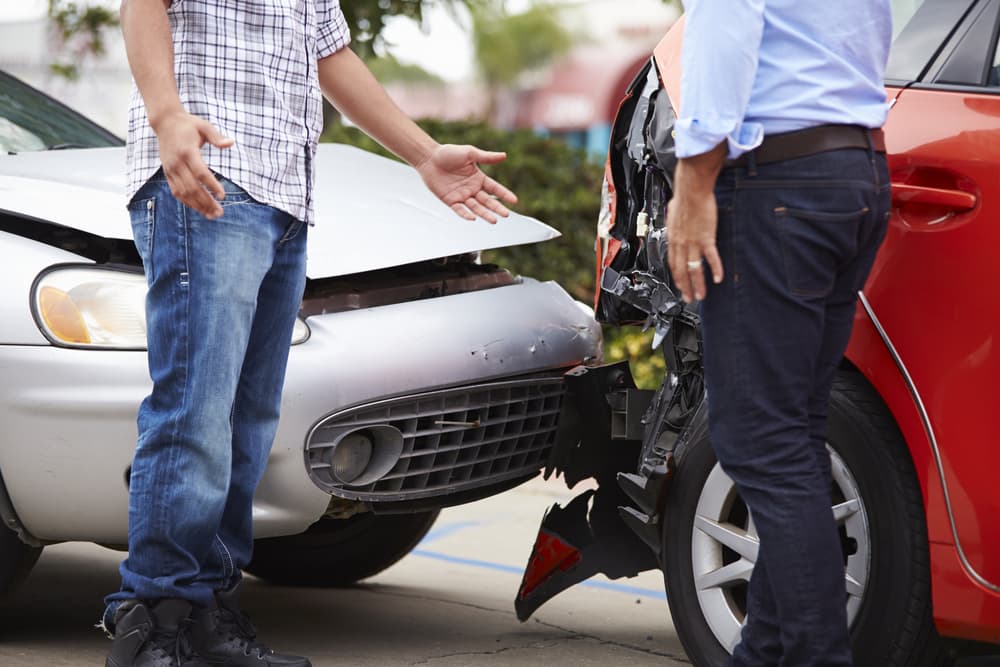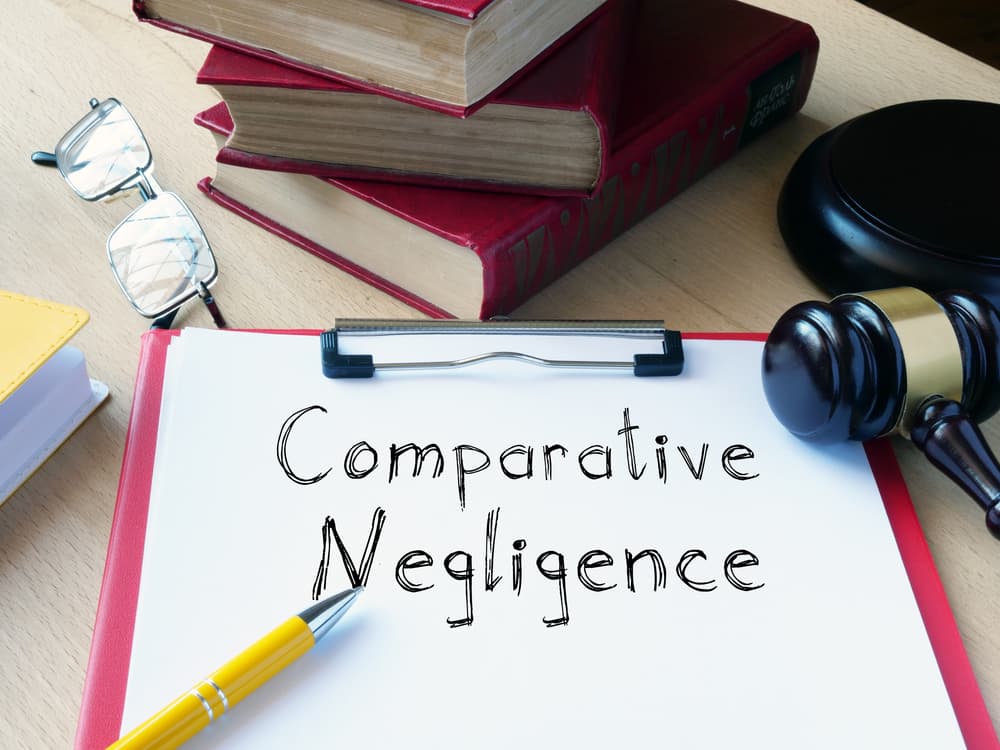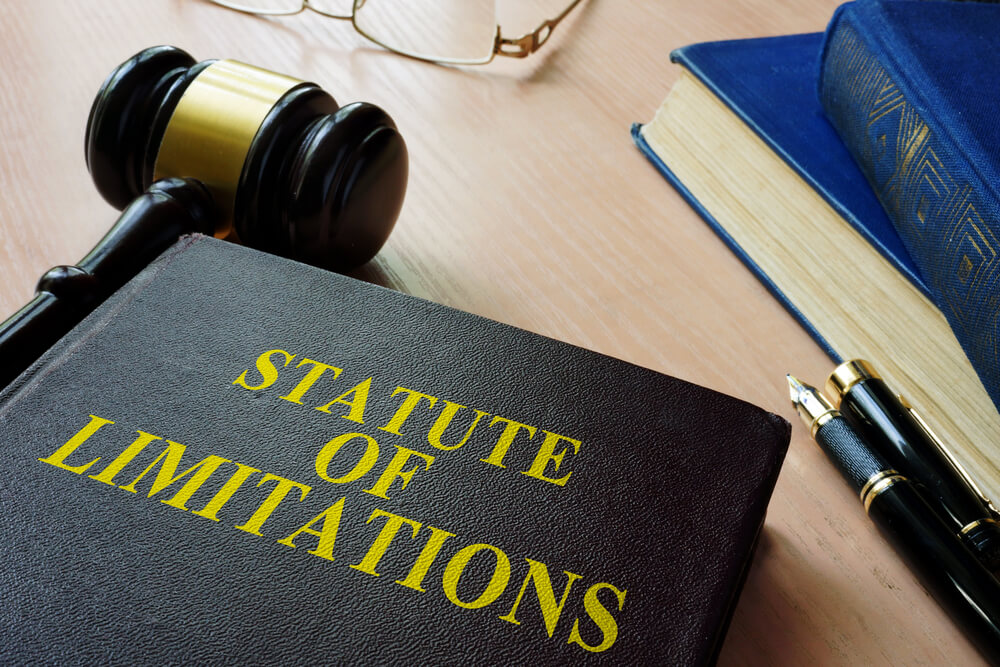Steven A. Bagen | July 7, 2024 | Car Accidents

Rear-end accidents are among the most common types of vehicular collisions. Despite their frequency, determining fault in rear-end accidents can be complex and involves various factors. Fault affects legal liabilities, insurance claims, and potential compensation for damages and injuries.
Injured in a rear-end accident? Don’t face it alone. Call our car accident lawyers at (800) 800-2575 now for your free consultation.
Common Scenarios in Rear-End Accidents
Presumption of Rear Driver’s Fault
In most rear-end accidents, the rear driver is usually at fault. The logic is simple: If the rear driver had kept a sufficient distance, they would have had ample time to react and stop, preventing the accident.
Exceptions to the Rule
However, this presumption is not absolute. Several scenarios can shift or share the blame with the lead driver:
- Sudden Stops: If the lead driver stops abruptly without a valid reason, they may share responsibility for the collision. For example, if a driver stops suddenly to make a turn without signaling, the rear driver might not have enough time to react.
- Brake Checking: A lead driver who intentionally hits the brakes to intimidate or harass the rear driver can make themselves partially or fully liable.
- Faulty Brake Lights: If the lead driver’s brake lights are not functioning, the rear driver might not receive adequate warning to stop. In such cases, you can hold the lead driver responsible for the accident.
- Mechanical Failures: If a mechanical issue, such as brake failure, contributes to the accident, the liability may extend to the vehicle manufacturer or the mechanic responsible for the faulty repairs.
Legal Principles and State Laws
Comparative Negligence

Florida follows a modified comparative negligence system, distributing fault among all parties involved in an accident. The insurer or the court assesses each party’s degree of fault, reducing their compensation accordingly.
No-Fault Insurance
Florida operates under a no-fault insurance system. In this system, drivers must file claims with their own insurance companies regardless of who caused the accident.
This approach aims to expedite compensation for minor injuries and reduce the burden on the court system. However, for serious injuries, victims can still pursue claims against the at-fault driver.
Personal Injury Protection (PIP)
Florida requires all drivers to carry Personal Injury Protection (PIP) insurance, which covers a significant portion of medical expenses and lost wages in the event of an accident.
Specifically, PIP insurance in Florida provides:
- 80% of Medical Expenses: PIP covers 80% of all necessary and reasonable medical expenses related to the accident, up to a limit of $10,000. This includes hospital bills, surgical costs, rehabilitative services, and more.
- 60% of Lost Wages: PIP also covers 60% of lost wages if the accident results in injuries that prevent you from working.
- Additional Benefits: PIP may also cover costs such as transportation to medical appointments and replacement services, if the injury prevents you from performing household tasks.
Threshold for Serious Injury
While PIP provides immediate benefits regardless of fault, Florida law allows injured parties to step outside the no-fault system and file a lawsuit against the at-fault driver if certain conditions are met. To do so, the injuries must meet a severity threshold.
This threshold includes:
- Significant and Permanent Loss of a Bodily Function: Injuries that result in a permanent and significant impairment of an important bodily function qualify.
- Permanent Injury: This includes injuries that are determined to be permanent, beyond just a temporary condition.
- Significant Scarring or Disfigurement: Injuries that result in visible and significant scarring or disfigurement can meet the threshold.
- Death: If the accident results in a fatality, the survivors may also pursue a lawsuit outside the PIP system.
Key Legal Principles that Establishes Fault
To establish fault, the injured party must demonstrate:
- Duty of Care: Every driver in Florida is legally required to operate their vehicle safely and avoid causing harm to others. This duty includes maintaining a safe following distance and avoiding distractions while driving.
- Breach of Duty: If a driver fails to uphold their duty of care, such as by tailgating or texting while driving, they have breached this duty. This can lead to liability.
- Causation: Establishing fault requires proving that the breach of duty directly caused the accident.
- Damages: The injured party must demonstrate that they suffered measurable harm due to the accident, such as medical expenses, lost wages, or vehicle damage.
Determining Fault in Complex Situations
Multi-Car Pileups
Multi-car pileups complicate the process of determining fault in rear-end accidents. In these scenarios, more than one driver may share responsibility.
The rear-most driver typically bears some liability for all the damages, as they set off the chain reaction. However, each driver involved can also bear a portion of the blame if they followed too closely or drove negligently.
Factors to Consider:
- Position of each vehicle in the pileup.
- Speed and distance between vehicles.
- Actions of each driver before the collision.
- Road and weather conditions.
Road Conditions and Environmental Factors
Road conditions and environmental factors play a significant role in rear-end accidents. Poor road maintenance, such as potholes or unclear signage, can contribute to accidents. Adverse weather conditions, like rain or fog, reduce visibility and increase stopping distances, making collisions more likely.
Key Elements:
- Weather Conditions: Rain, fog, snow, or ice can all impact driving conditions and reaction times.
- Road Maintenance: Potholes, uneven surfaces, and unclear road markings can lead to sudden stops and accidents.
- Visibility: Poor lighting or blind curves can make it difficult for drivers to see and react appropriately.
Role of Third Parties
In some cases, third parties, such as other drivers, pedestrians, or cyclists, may contribute to rear-end accidents. For instance, a car cutting off another vehicle can cause sudden braking, leading to a collision. Similarly, a pedestrian stepping into traffic unexpectedly can cause chain-reaction accidents.
Examples of Third-Party Influence:
- Other Drivers: A car that swerves or cuts off another vehicle, causing a sudden stop.
- Pedestrians: A person crossing the road without warning.
- Cyclists: A cyclist moving erratically between traffic lanes.
Gathering Evidence to Establish Fault
Importance of Police Reports
Police reports play a crucial role in determining fault in rear-end accidents. They provide an official account of the accident, documenting the scene, conditions, and statements from those involved.
Officers often include their observations and any citations issued, which can significantly influence fault determination.
Key Information in Police Reports:
- Description of the accident scene.
- Statements from drivers and witnesses.
- Any traffic law violations noted.
- Officer’s observations and preliminary conclusions.
Witness Statements and Video Footage
Witnesses can describe the drivers’ behaviors, road conditions, and other relevant details. Additionally, video footage from traffic cameras, dashcams, or nearby security cameras can offer clear, unbiased evidence of the events leading up to the collision.
Benefits of Witness Statements and Video Footage:
- Provides an unbiased account of the accident.
- Corroborates or contradicts statements from involved parties.
- Captures the sequence of events visually.
Vehicle Black Box Data and Accident Reconstruction
Modern vehicles often come equipped with black boxes, also known as Event Data Recorders (EDRs). These devices record critical data such as speed, braking patterns, and the force of impact moments before a collision. Accident reconstruction experts can analyze this data to reconstruct the accident and determine each driver’s actions leading up to the crash.
Key Elements of Black Box Data:
- Speed at the time of the accident.
- Brake application and timing.
- Steering inputs.
- Force of impact.
Legal Assistance and Claiming Compensation
Role of a Personal Injury Lawyer
Lawyers specializing in personal injury can help navigate the legal landscape, gather essential evidence, and negotiate with insurance companies on your behalf. Their expertise ensures that your rights are protected and that you receive fair compensation for your injuries and damages.
Benefits of Hiring a Personal Injury Lawyer:
- Legal Expertise: Lawyers understand the intricacies of personal injury law and can provide valuable guidance.
- Evidence Collection: They can help gather and preserve critical evidence, such as medical records, witness statements, and accident reconstruction reports.
- Negotiation Skills: Experienced lawyers can negotiate with insurance companies to maximize your settlement.
- Court Representation: If your case goes to trial, a lawyer can represent you in court, advocating for your best interests.
Steps to File a Claim
Filing a claim for compensation after a rear-end accident involves several steps.
Your lawyer will assist you for much of this process:
- Seek Medical Attention: Immediately after the accident, seek medical care for any injuries. Document all treatments and keep detailed records of medical expenses.
- Report the Accident: File a police report to create an official record of the accident.
- Gather Evidence: Collect all relevant evidence, including photos of the accident scene, witness contact information, and any available video footage.
- Notify Your Insurance Company: Inform your insurer about the accident and provide them with necessary documentation.
- Consult a Personal Injury Lawyer: Seek legal advice to understand your rights and the potential value of your claim.
- File a Personal Injury Claim: Your lawyer can help you file a claim against the at-fault driver’s insurance company.
- Negotiate a Settlement: Engage in settlement negotiations with the insurer. Your lawyer will advocate for a fair settlement amount.
- Go to Trial if Necessary: If all parties cannot reach a fair settlement, your lawyer can take the case to court to seek compensation.
Potential Challenges and How to Overcome Them
Rear-end accident claims can encounter several challenges, including disputes over fault, inadequate insurance coverage, and low settlement offers. You need a lawyer who can understand and address these challenges for a successful claim.
Common Challenges:
- Disputes Over Fault: Insurance companies may argue that you were partially or fully at fault for the accident. Gathering solid evidence and working with a lawyer can help counter these claims.
- Inadequate Insurance Coverage: The at-fault driver’s insurance may not fully cover your damages. In such cases, exploring options like underinsured motorist coverage or filing a lawsuit can help.
- Low Settlement Offers: Insurers often make low initial settlement offers. Negotiating effectively, with the help of a lawyer, can ensure you receive a fair amount.
Strategies to Overcome Challenges:
- Collect Comprehensive Evidence: Strong evidence supports your claim and counters disputes over fault.
- Understand Insurance Policies: Knowing the details of your insurance and the at-fault driver’s policy can help you identify additional coverage options.
- Seek Legal Representation: A personal injury lawyer can handle negotiations and litigation, ensuring your rights are protected and you receive adequate compensation.
Statute of Limitations

Understanding the time limits for filing claims and lawsuits is crucial to ensuring you do not miss out on potential compensation. The statute of limitations sets these deadlines, which vary depending on the type of claim and specific circumstances of the accident.
Time Limits in Florida
In Florida, there are specific deadlines for filing Personal Injury Protection (PIP) claims and personal injury lawsuits:
- PIP Claims: Florida law requires that you seek medical treatment within 14 days of the accident to be eligible for PIP benefits. Filing the claim itself should occur promptly after this initial treatment.
- Personal Injury Lawsuits: You have four years from the accident date to file a personal injury lawsuit against the at-fault driver. This period allows sufficient time to gather evidence, seek medical treatment, and negotiate with insurance companies before resorting to litigation.
Exceptions and Extensions
Certain situations can extend or modify the statute of limitations:
- Discovery Rule: If an injury or damage is not immediately apparent, the statute of limitations may start from the date you discover or should have discovered the injury.
- Minors and Incapacitated Persons: The statute of limitations may be extended if the injured party is a minor or legally incapacitated at the time of the accident.
- Defendant’s Absence: If the at-fault driver leaves the state or cannot be located, the statute of limitations may only apply when they return or are found.
Why Bagen Law Accident Injury Lawyers, P.A..?
Bagen Law Accident Injury Lawyers, P.A.., offers unmatched legal representation for rear-end accident cases in Florida. Our experienced team excels in navigating the complexities of comparative negligence and no-fault insurance laws. We have a proven track record of securing substantial client settlements and verdicts.
At Bagen Law Accident Injury Lawyers, P.A.., we provide personalized attention, comprehensive support, and operate on a contingency fee basis—meaning you pay nothing unless we win your case.
Contact skilled personal injury lawyers from Bagen Law Accident Injury Lawyers, P.A.., today at (800) 800-2575 for your free consultation. Let us help you secure the justice and compensation you deserve.
